I went to Basel, Switzerland for one day. Basel was one of the later additions to my trip; it was a bit out of my way, but they had organized an exhibition of seventy of Vincent’s landscapes. All landscapes! I was thrilled to go, although I must admit I was in that city for less than twenty-four hours, and thus did not really get to enjoy it, per se. Yet once I arrived in Basel, I knew it had been worth it. Not only was the exhibition (which only lasted five months) mentioned in every piece of touristic paraphernalia handed to me, but there was also this:

Much of my journey had already felt like a quest, but here in Basel there were markers to guide me! I had been concerned about getting lost on my way to the museum (I arrived tired, ate quickly – and at a Starbucks, how terrible – all in order to get to the museum as fast as possible), but the city had marked the way. It was a brief but unique pilgrimage from the train station to the museum.
I arrived there at 2pm, the museum closed at 7pm. I had five hours for seventy paintings. I set my eyes very open, and tried to absorb every bit of you. In some ways, it was fortunate that they did not allow photography, otherwise I might have gone crazy. As it is, I wrote fourteen pages in those five hours – which is a lot! I must admit they read like one long letter to you. I did not leave the galleries for five hours, did not take a break, and lingered until the guards asked us to leave, until I had energy for nothing else but to sigh, again and again.
No expense was spared here, and that was reflected in both the ticket price, and the lobby installation.

A giant video installation floated above the crowd in the lobby, projected on a circular band hanging from the ceiling. On it was projected images, video and text summing up your biography. I found out from a museum guard that this enormous thing was created solely for this exhibition, and that it would come down after it ended. I think it was around then that I understood just how much money had gone into this museum’s endeavor, just how much you are worth now, Vincent… I imagined the complete awe such a sight would provoke in you.

Now Reader, a quote from my journal. It’s all I have to offer… The exhibition was in chronological order, which allowed the viewer to follow your footsteps, Vincent, and watch the gradual transformations as you grew into your own style.
And then, ’87 continues into thicker paint, more impasto, longer strokes, darker and lighter colors together, bouncing back and forth. Entrance of Voyer-d’Argenson Park at Asnières (1887) is truly a delight. I love the two ladies, in almost ultra-violet colors: bright white-green and blues, and sea foam, too.
You get increasingly free, looser, wider; leaves are now sometimes floating strokes of green hovering around that violet, mauve branch. Lighter and lighter colors, and now canvas is peeking out, bare and naked skin. I suppose, at least at first, Paris obviously opened you up, and you opened her up, too.
[Audio guide] on Restaurant de la Sienère at Asnières: “His brushwork too, has clearly changed. The color application is no longer smooth and even. Instead, strokes have been applied loosely, next to each other. This is reminiscent of the pointillists, who depicted objects with an abundance of individual tiny colored dots, placed next to each other. The technique of pointillism demands great precision. In contrast, Van Gogh’s brushwork is always spontaneous.”
Tags: art, Basel, museum, painting, technique, value, writing, YellowEurope
If Amsterdam was a wide embrace, if the Kröller-Müller was a sweet smile, if Nuenen was chill breath, and Auvers, hot tears… Paris was a wary look. From the moment I set foot on the Rue de Dunkerque, I felt that Paris would endure my visit, but it did not necessarily wish me well.
There were beautiful moments of course, but the most important part of my visit – Vincent’s acute and undeniable presence – well, Reader, I’m afraid I must keep a few things closer to my heart, at least for now. However, there are a few odds and ends from Paris I’d love to share with all of you today…
Namely two works of art that I find of incredible importance, both in the Musée Rodin. One is Vincent’s portrait of Père Tanguy (pronounced tahn-gee), his paint dealer.
Le Père Tanguy, 1887-1888.

Tanguy was one of Vincent’s closest friends, and one of the few who loved his work from the beginning. In general, Tanguy dealt with the post-impressionists before most other dealers, and with Vincent he traded paint for paintings. It worked out nicely for both of them.

Tanguy was just as interested in Japonisme (Japanese art pieces) as Vincent, and so they cover the background of this portrait. The soft smile on Tanguy’s lips is one you can really only behold in person, but I tried my best to capture it here.

I find the colors here simply extraordinary. That yellow fingernail kills me… This is particularly advanced (in my opinion) given that Vincent painted this while still in Paris, before he headed South and fully embraced his own style. As the story goes, Tanguy was so happy with this memorial, he put the price at 5,000 francs — far too high for anyone to ever purchase it from him. No one ever did in his lifetime, but the painting eventually became Rodin’s, and it now sits happily in the beautiful Rodin Museum in Paris.
Head of St. John the Baptist on a platter, 1887, by Auguste Rodin.

This sculpture also has an interesting link to Vincent that thankfully I had read about before I visited the museum. Apparently, when Theo (Vincent’s brother) first saw this bust, he said it looked exactly like Vincent.

Fascinatingly, after both Vincent and Theo’s death, Theo’s wife Jo saw the piece. She swore it must have been modeled after Theo. Not only does this attest to the brothers looking alike, but I believe it must say something about the expression, and about love. I imagine that Theo and Jo saw Vincent and Theo (respectively) as men of suffering…
Perhaps most chilling to me was that I recognized you, Vincent. After seeing so much of your work – and particularly after seeing the actual places and things you painted – I had begun to understand your vision. I could, in a way, see through your eyes; I could look at your paintings and begin to imagine the reality you were capturing. This also permitted me to truly see you, through you.
The curve of the nose right at the horizon of your eyes, the high cheekbones especially accentuated in your years of hunger… I did not need to look at a label to find you in that room.
Self-Portrait, 1887.

Self-Portrait, 1887.

Self-Portrait dedicated to Paul Gauguin, 1888.
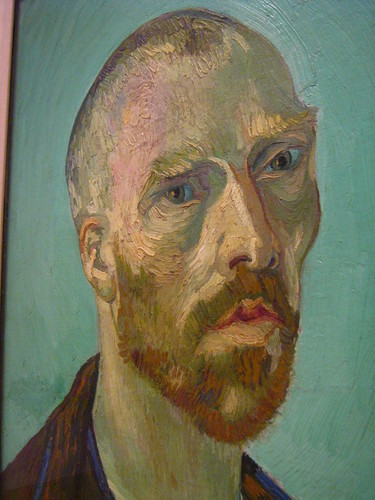
Self-Portrait, 1889.

As I wrote in my journal the following day, it is interesting that only now – this week, even – that I know your face.
Tags: art, beauty, death, love, memorial, museum, painting, Paris, Rodin, self-portrait, Tanguy, time travel, Travel, writing, YellowEurope
What I think is the best life, oh without even the slightest shadow of a doubt, is a life made up of long years of being in touch with nature out of doors — and with the something on high — unfathomable, ‘awfully Unnameable’, because one can’t find a name for it — above that nature. (5 November 1883 to Theo)

Vincent,
Lately I dream of a cabin. I dream of going up and away. I dream of a fireplace and my books, of paper and ink with tea on the stove, of no electricity and warm, warm blankets. I dream of long walks along the mountainside or riverside or the heath or the forest — I dream of clearing my mind. I dream of more Time. I dream of immersing myself in you, totally, completely, utterly, without interruption. I suppose it is a dream of many writers.
In your letters which I am perusing of late, there is special time in 1883 in which you escaped. For a few months, you ran away from all civilization, finally cut the strings between yourself and your lover Sien, and went to Drenthe, in the northeastern Netherlands. It is the most rural place you ever lived as a painter; it is the only place I did not get to visit on my trip to Europe. I am sure my dream of a cabin haunts me because of these letters, and because of this place lodged only in my imagination, and not in my memories.
You were lonely there, and, unlike in Arles with Gauguin, no one ever came to join you.
I’ve been planning today to write about the cabin (a fantasy that grows more tangible as the days pass), and then the quote at the beginning of this post is how you open your letter to Theo today. An incredible article also was published today about an architect who uses whole trees in the houses and greenhouses that he designs, and how whole trees prove more economical, better for the environment, and stronger too. And we know how I feel about trees.
Finally, as if to overwhelm me completely, I noticed a church yesterday on my way to work (a walk I’ve been taking for weeks now) and I realize the building is quite old. As I approach, I find it is an old house – built in 1883. In Chicago.
I can’t wait to find a way inside.
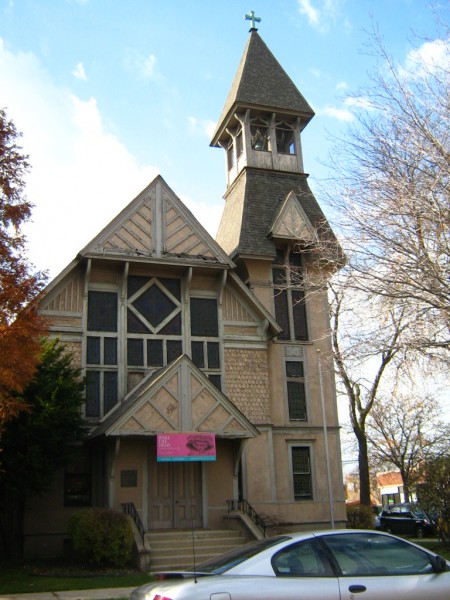
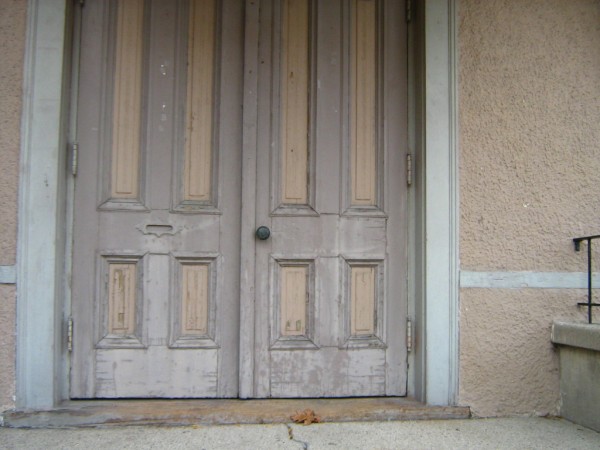
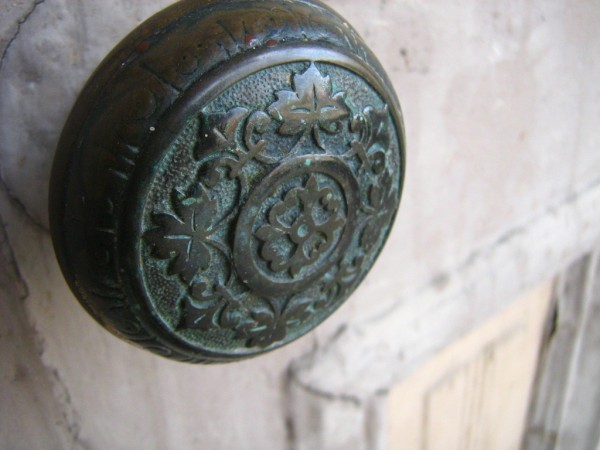
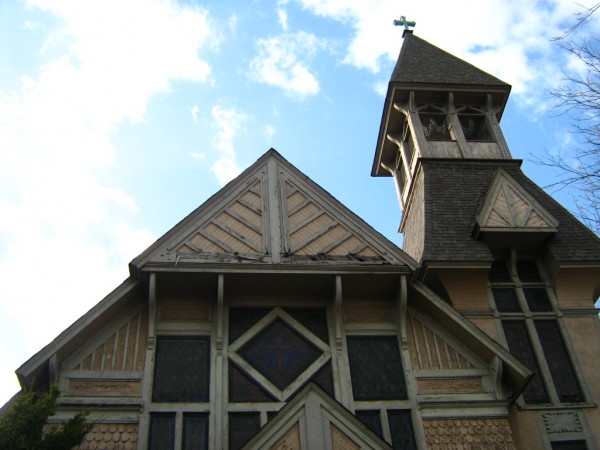
Tags: cabin, Chicago, life, love, nature, Research, time travel, walking
















